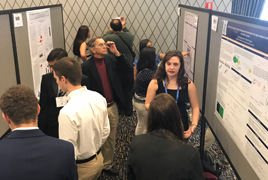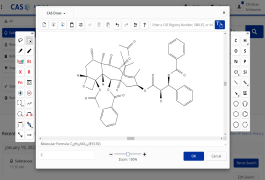Updated ACS Style Guide Breaks Down Scientific Writing

How do I organize my paper for a chemistry journal? When do I use tables vs. figures? Is “Beer’s law” capitalized? Should I use passive or active voice? (And what is passive voice anyway?)
The answers to these and many other questions about scientific writing and publishing are in the ACS Guide to Scholarly Communication, now in digital format. An expanded version of the ACS Style Guide, the new resource provides students, researchers, educators, and librarians with essential guidance on broad principles, such as open science and publication ethics, as well as the nuts and bolts of references and scientific and editorial style conventions.
“Communication is vital in the world of scientific research,” says Brandon Nordin, senior vice president, marketing, sales & innovation in the ACS Publications Division. “We are excited about the revitalization of the ACS Guide to Scholarly Communication and the tools it will give scientists across the globe to accurately communicate their research.”
As a member of ACS, you have the benefit of downloading 50 free articles per year, including content in the guide. If your university subscribes to ACS journals, you get universal access to the content, both on- and off-campus, including extensive links to related websites and in-line videos.
Current hot topics and new ideas in publishing, such as preprints, digital data, communicating safety information, and open access, are now a part of the guide. Because it is a digital resource, the guide will be continuously edited and updated to reflect changes in publishing and the needs of the scientific community. In the future, editors will include information on patents, treatment of data, PowerPoint presentations, machine-readable chemical structures, and social media.
“I have been an editor for ACS journals since 2003,” reflects Prashant V. Kamat, one of the contributors to the new resource. “I have seen tens of thousands of submissions, many of which were rejected because of poor composition, flawed graphics, or failure to meet the journal scope. The ACS Guide to Scholarly Communication will provide authors with all the necessary information to prepare a research article and stay ahead of the competition.”
In addition to Kamat, the authors are: Gregory M. Banik, Ph.D., general manager at Bio-Rad Laboratories, Informatics Division; Grace Baysinger, chemistry and chemical engineering librarian at Stanford University; Rev. John A. Zahm professor of science, University of Notre Dame, and editor-in-chief of ACS Energy Letters; and Norbert Pienta, Ph.D., chemistry professor (retired), University of Georgia, and former editor-in-chief of the Journal of Chemical Education.
ACS GUIDE TO SCHOLARLY COMMUNICATION
Note: Some parts of the guide are under development and will be released at a later date.
Table of Contents
PART 1: Scientific Communication
1.1 Different Ways Scientists Communicate
1.2 Ethics in Scientific Publication
1.3 Communicating Safety Information
1.4 Intellectual Property: Copyright, Permissions, & Beyond
1.5 Open Access
1.6 Chemistry Preprints
PART 2: Scientific Journals
2.1 Writing about Your Research: Best Practices
2.2 Selecting a Scientific Journal
2.3 Organization of Your Research Article
2.4 Submission Procedures
2.5 Peer Review
2.6 Postsubmission Procedures
PART 3: Data in the Google Era
3.0 Data in the Google Era: An Introduction
3.1 Data Sharing
3.2 Chemical Structures in the Google Era
3.3 Digital Chemical Data
PART 4: Scientific Style Conventions
4.1 Graphics & Multimedia
4.2 Tables
4.3 References
4.4 Chemical Conventions
4.5 Chemical Structures
4.6 Chemical Compound Nomenclature
PART 5: Editorial Style Conventions
5.1 Effective Writing & Word Usage
5.2 Grammar, Punctuation, & Spelling
5.3 General Style Conventions
5.4 Numbers, Mathematics, & Units of Measure
This story is adapted from the ACS press release New ACS Guide to Scholarly Communication Helps Scientists Make Their Research Stand Out and from the ACS Axial article The ACS Style Guide is Now the ACS Guide to Scholarly Communication.




